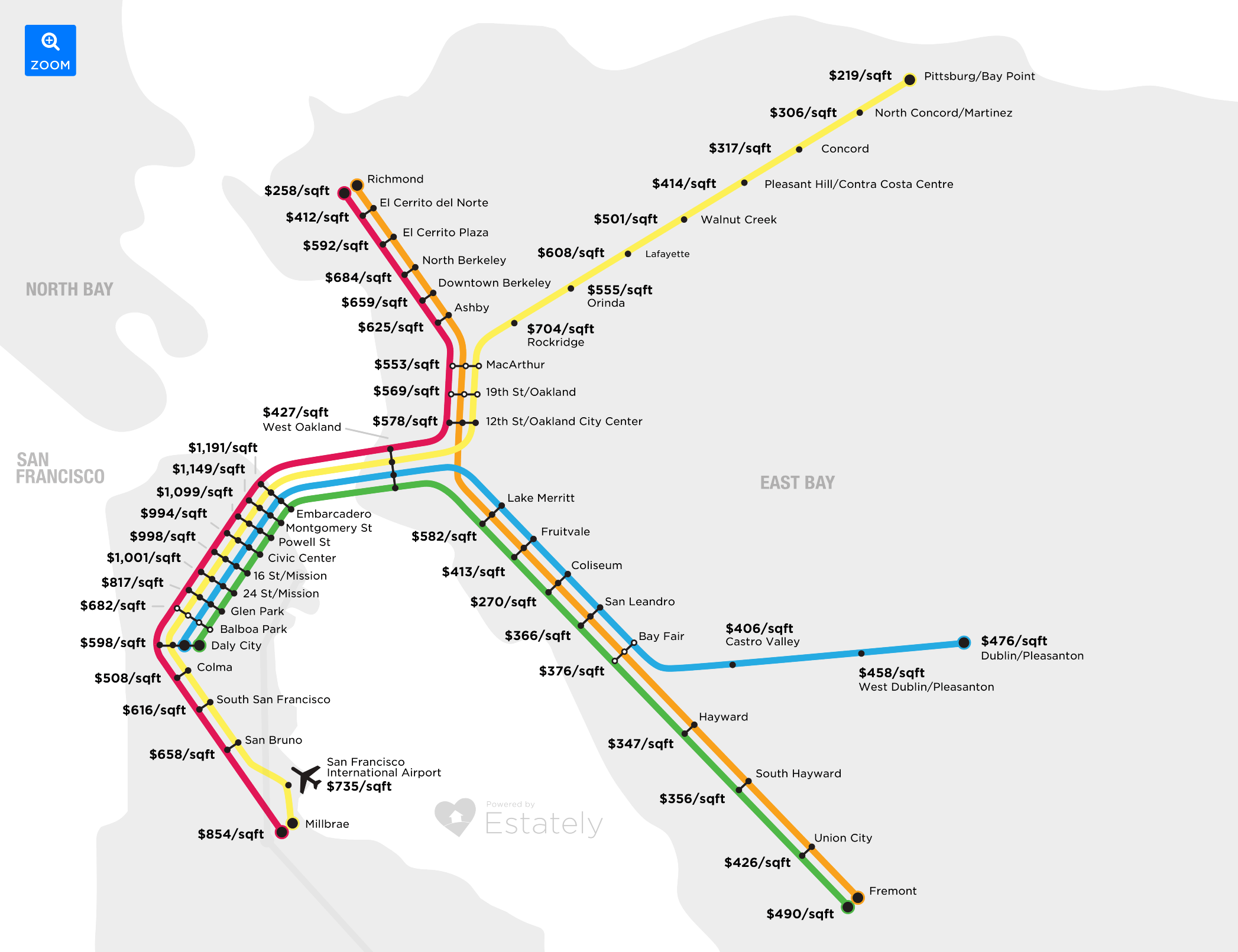Posted on April 11, 2016, 11:24 am By Ethan Elkind
No comments yet Categories: Rail Transit, smart growth Tags: BART, Caltrain
Leave a Reply
You must be logged in to post a comment.
A real estate firm did a quantitative analysis for the San Francisco Bay Area:
Estately Real Estate Search analyzed the last six months of home sales for houses, townhouses, and condos that were within a one-mile radius of each BART and Caltrain transit stop. We then broke them down by price per square foot.
At an average of $1,630 per square foot, Caltrain’s California Avenue stop in Palo Alto is the Bay Area’s most expensive transit stop to buy a home near. Pittsburg/Bay Point BART stop, the furthest from downtown San Francisco, is the least expensive at $219 per square foot on average.
Here is the map:
 It would be interesting to see how these values compare to home prices outside of that one-mile radius. In other words, is there a price premium for living near these transit nodes? Some studies have documented this transit-oriented value, such as this one [PDF] from APTA, Center for Neighborhood Technologies, and the National Association of Realtors in 2013. But this Estately study could be expanded to show the trend in the Bay Area. Otherwise, it’s hard to know how much rail transit impacts the prices.
It would be interesting to see how these values compare to home prices outside of that one-mile radius. In other words, is there a price premium for living near these transit nodes? Some studies have documented this transit-oriented value, such as this one [PDF] from APTA, Center for Neighborhood Technologies, and the National Association of Realtors in 2013. But this Estately study could be expanded to show the trend in the Bay Area. Otherwise, it’s hard to know how much rail transit impacts the prices.
Meanwhile, this study is a nice complement to the UC Berkeley Law and Next 10 report released last October that grades rail transit station neighborhoods in California, including in the BART and MUNI systems.
You must be logged in to post a comment.
 Ethan's book Railtown covers the history of the Los Angeles Metro Rail system.
Ethan's book Railtown covers the history of the Los Angeles Metro Rail system.
Railtown presents the history of this system by drawing on archival documents, contemporary news accounts, and interviews with many of the key players to provide critical behind-the-scenes accounts of the people and forces that shaped the system.
